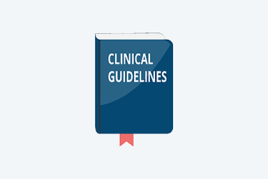Study author and board-certified dermatologist encourages public to get screened for skin cancer
ROSEMONT, Ill. (July 11, 2023) — Melanoma, the most serious form of skin cancer, is highly treatable when detected early, but when the disease advances, it can lead to death. A new article published in the Journal of the American Academy of Dermatology reveals that men with melanoma — and particularly men with skin of color — are more likely to die than women with melanoma.
“We know that men may be less likely to seek medical care than women, so they can be diagnosed with melanoma at later stages,” said board-certified dermatologist and co-author of the study Ashley Wysong, MD, FAAD Founding Chair of the Department of Dermatology at the University of Nebraska Medical Center. “However, even after accounting for later stages at diagnosis, men still have worse overall survival rates than women with melanoma, so we suspect that there are some unmeasured social, genetic, tumor-specific and potentially biological factors at play, such as hormones and the way the immune system responds to melanoma tumors.”
The analysis involved more than 200,000 participants and is the largest study to date on racial differences in men with melanoma. It compared melanoma diagnosis data from the National Cancer Database from 2004 until 2018 in White, Black, Asian, American Indian/Alaskan Native, and Hispanic men.
Overall survival rates in men with melanoma were highest for White men (75%), followed by American Indian/Alaskan Native (69%), Asian (68%), Hispanic (66%), and Black men (52%). White and American Indian/Alaskan Native men were more likely to develop melanoma on the trunks of their bodies, while Black, Asian and Hispanic men were more likely to develop it in their lower extremities, specifically areas that are not exposed to the sun.
The study also showed that Black, Hispanic and Asian men are more likely to have melanoma diagnosed at an advanced stage when it is more difficult to treat.
“The location of the first diagnosed melanoma can play a role in this issue,” said Dr. Wysong. “Many patients have spots evaluated by dermatologists because somebody else has pointed out a spot to them. Melanoma in areas that do not have sun exposure can be more difficult for both patients and their loved ones to see, which can lead to a delayed diagnosis. In addition, melanoma in patients with darker skin tones can often be mistaken for other skin conditions, which can also delay care and definitive treatment.”
Researchers are uncertain exactly why men have worse survival rates than women, Dr. Wysong said, underscoring the need for more research in the area, including a better understanding of social determinants of health, which are the economic and social conditions that affect peoples’ health, in melanoma, and the importance of men being screened by a board-certified dermatologist.
“We hope our research can lay the foundation for future studies to determine why there’s such a gap in survival rates, and to make headway to reduce these survival rate gaps,” Dr. Wysong said.
Dr. Wysong says that if you notice that you have any lesions on your skin that are new, growing, bleeding or just not healing, then you should see a board-certified dermatologist.
To perform a skin self-exam, check your skin and nails for the following:
A stands for ASYMMETRY. One half of the spot is unlike the other half.
B stands for BORDER. The spot has an irregular, scalloped, or poorly defined border.
C stands for COLOR. The spot has varying colors from one area to the next, such as shades of tan, brown or black, or areas of white, red, or blue.
D stands for DIAMETER. While melanomas are usually greater than 6 mm, or about the size of a pencil eraser, when diagnosed, they can be smaller.
E stands for EVOLVING. The spot looks different from the rest or is changing in size, shape, or color.
To find a board-certified dermatologist in your area, visit aad.org/findaderm.
# # #
Contact
Rhys Saunders, rsaunders@aad.org
Media Relations, mediarelations@aad.org
More Information
Practice Safe Sun
Prevent Skin Cancer
Sun Damage and Skin
About the AAD
Headquartered in Rosemont, Ill., the American Academy of Dermatology, founded in 1938, is the largest, most influential and most representative of all dermatologic associations. With a membership of more than 20,800 physicians worldwide, the AAD is committed to advancing the diagnosis and medical, surgical, and cosmetic treatment of the skin, hair, and nails; advocating high standards in clinical practice, education and research in dermatology; and supporting and enhancing patient care because skin, hair, and nail conditions can have a serious impact on your health and well-being. For more information, contact the AAD at (888) 462-DERM (3376) or aad.org. Follow @AADskin on Facebook, TikTok, Pinterest and YouTube and @AADskin1 on Instagram.
Editor’s note: The AAD does not promote or endorse any products or services. This content is intended as editorial content and should not be embedded with any paid, sponsored or advertorial content as it could be perceived as an AAD endorsement.
About JAAD
The Journal of the American Academy of Dermatology is the most widely cited dermatology journal in the world. JAAD was the first most-cited dermatology journal in 2022, according to impact factor rankings from Clarivate’s Journal Citation Reports (JCR) Web of Science Group. In 2009, the Special Libraries Association named JAAD one of the most 100 influential journals of the past 100 years. JAAD also has two open-access companion titles: JAAD Case Reports and JAAD International. Follow @JAADJournals on Facebook, Twitter and Instagram.
 Find a Dermatologist
Find a Dermatologist
 Member directory
Member directory
 AAD Learning Center
AAD Learning Center
 2026 AAD Annual Meeting
2026 AAD Annual Meeting
 Need coding help?
Need coding help?
 Reduce burdens
Reduce burdens
 Clinical guidelines
Clinical guidelines
 Why use AAD measures?
Why use AAD measures?
 Latest news
Latest news
 New insights
New insights
 Physician wellness
Physician wellness
 Joining or selling a practice?
Joining or selling a practice?
 Promote the specialty
Promote the specialty
 Advocacy priorities
Advocacy priorities
